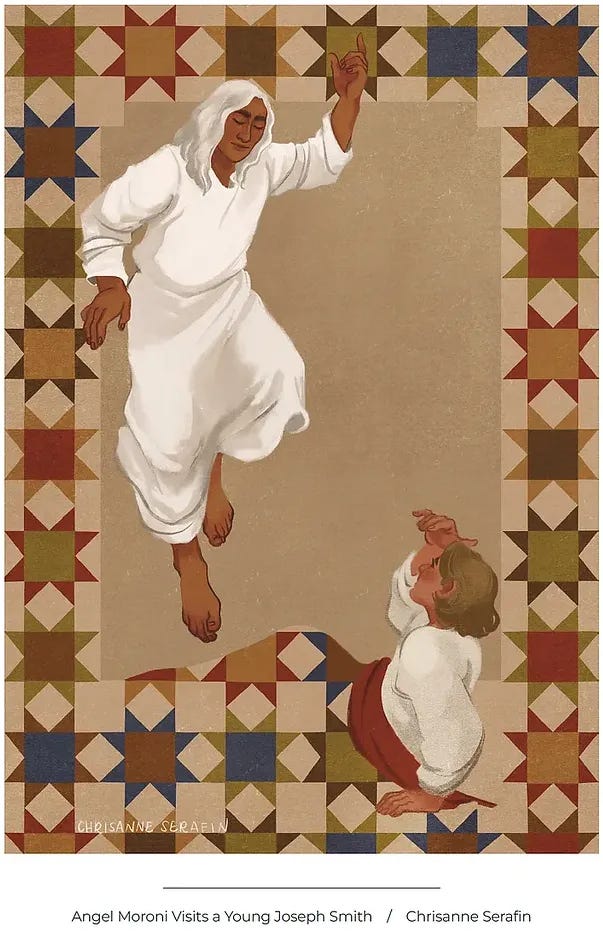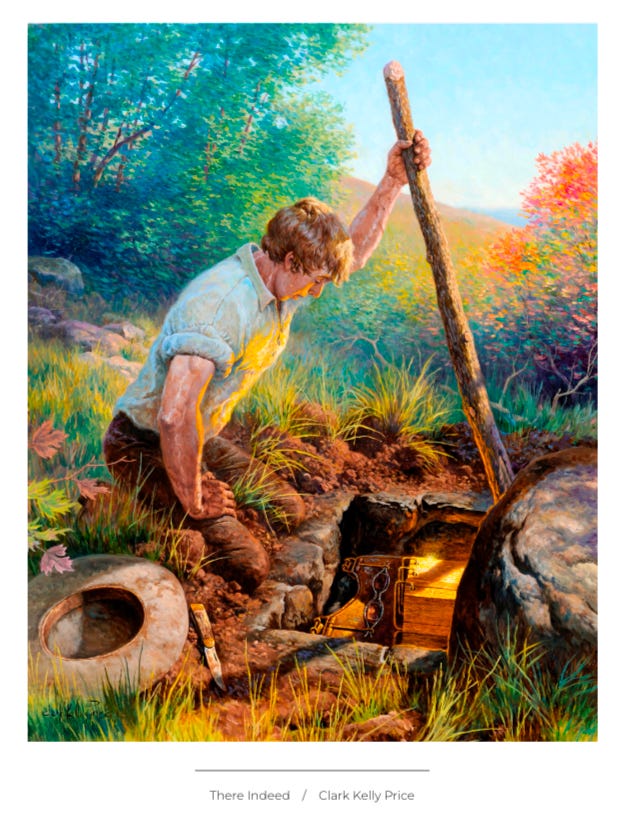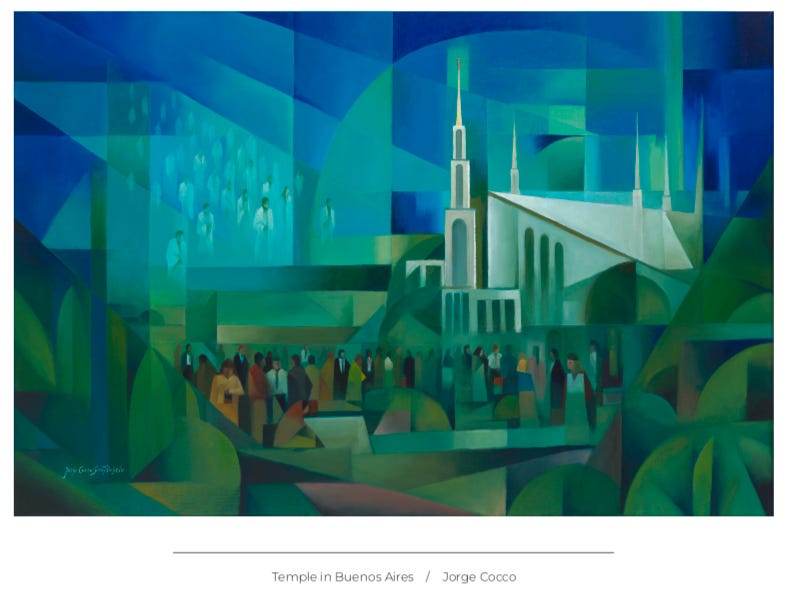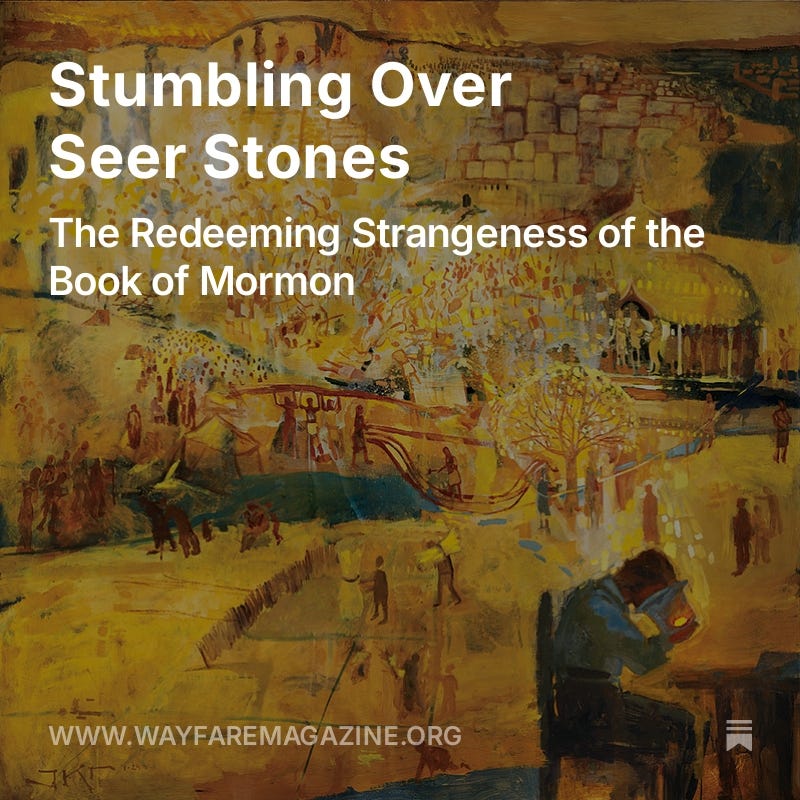Turning Our Hearts
Faith Matters resources to accompany your Come Follow Me study: January 20-26

God has a work for me to do.
What is the work of the Restoration? Listen to “Restoring the People of God,” an excerpt from Restoration:
The poor will receive the kingdom of heaven. The brokenhearted will be healed. The captives will be liberated. The blind will see. The bruised will be made whole. In the ultimate sense, this is the work of atonement and reconciliation that only our Savior Jesus Christ can fully accomplish. But in the more immediate sense, the call of the Restoration is for each recipient of Christ's redeeming love to extend that grace by co-participating with him as “saviors... on Mount Zion.”
That salvation cannot and will not wait for the next world. The restoration of God's people is here. The restoration of God’s people is now.
Listen to our conversation with Patrick about Restoration:
Watch or listen to Patrick Mason’s presentation from Restore 2022, “Envisioning the Restoration’s Third Century.”
Read “The Restored Church or the "Restoring" Church?” an excerpt from Restoration:
It is not enough only to know what God intended for his children in previous generations. We have to know what God wants for us right now.
The ongoing Restoration means that every generation, and every person, must rediscover the gospel of Jesus Christ for themselves… What does the Restoration mean for you, today, at this moment? What does God need you to do that no other person and no other generation has ever done?
Read “The Abounding Church” by Terryl Givens, from Issue 1 of Wayfare:
We invite several perils by associating "restoration" and "fullness" with past and total incarnations. The words presume a fixity, a stasis, an ahistorical set of practices and principles sufficient for all times and conditions—a theological universe, in sum, that is static, sterile and ultimately, stifling. Creativity, novelty, growth, adaptation, adventure, and exuberance find little place in such a programmatic vision. Instead of a dynamic process of unfolding spiritual truths, a process that we participate in with God, connotations of the word “fullness” can suggest simply reassembling puzzle pieces already present into a bordered whole.
I see a different God in Joseph Smith’s revelations, one more similar to the God of Genesis, who says, “Let us create.”
By restoring His gospel, the Savior fulfilled ancient prophecies.
From the Hebrew prophets to Christ, from the Nephite prophets to Joseph Smith and the modern church, the message has been the same. God's great restoration project seeks to unite all generations of the human family from the beginning to the present and onward all the way to the end of time. In fact, as Malachi and Moroni prophesied, without this restoration “the whole earth would be utterly wasted”; all of God's work of creation would in the end come to naught.
Yes, there are many “things” to restore. But ultimately God isn't concerned with restoring “things” as much as he is with using those things to restore what really matters—“his people.” So the “restoration of all things” is designed with one grand aim in mind: restoring God's people—our Father and Mother's children, their eternal family—to wholeness.”
—Patrick Mason, in “Restoring the People of God,” an excerpt from Restoration.
God will prepare me to work in His kingdom.

Joseph Smith provides an example of doubt honestly acknowledged, honestly engaged, and powerfully profitable. He tells us that even after a heavenly vision, even after being told by Jesus Christ that his sins were forgiven, he again fell into doubt about his spiritual standing before the Lord. He sought assurance and clarity, and the result was an angelic visitation, a divine commission, and the start of his prophetic career (which Joseph dated to Moroni, not the First Vision). Imagine the trajectory of the Restoration, if someone had told young Joseph: “Stop worrying and asking questions. Cease questioning your faith and spiritual witness you already received. Doubt is faithlessness.”
—“Can Stronger Faith Emerge From The Crucible Of Doubt?”
The Lord sent Elijah to turn my heart to my ancestors.
Read a Wayfare essay about turning our hearts to our ancestors:
I can repent and be forgiven.
Listen to “Repentance as Transformation,” a conversation between Thomas McConkie and Adam Miller on the Faith Matters podcast.
This is repentance as something like a positive way of life, rather than an occasionally negative thing that I have to do in response to my own failures. This is repentance as a kind of a proactive, positive cultivation of this open heart, that allows me to continually go beyond the limits of my own mind and my own soul. —Adam Miller
Listen to “Stories and Sin: A Conversation with Adam Miller,” which includes a question about how to help our kids develop a healthy relationship with these concepts:
If my experience of guilt fixes my attention even more firmly on myself, then I’m in trouble. If my experience of guilt turns my attention away from me and towards the people who I feel guilty about having hurt, then it’s working in the right way. It’s turning me in the right direction. —Adam Miller
Listen to our brand-new conversation with Justin Dyer on perfectionism:
Heavenly Father called Joseph Smith to help Him do His work.
Read a Wayfare essay by John G. Turner, the author of Joseph Smith: The Rise and Fall of an American Prophet
Read “Stumbling over Seer Stones,” an essay by James Egan about what the strange origins of the Book of Mormon can teach us:
Heavenly Father wants families to be sealed in the temple.

We are blessed in our faith tradition to have an understanding of families that spreads so much farther and goes so much deeper than just the nuclear family unit. We believe in a family that can be sealed together for eternity, through countless generations, from child to parent to grandparent. It’s a family unit that is just as important and serves just as many purposes as the modern nuclear family. The branches of this eternal family tree spread wide enough to encompass siblings and cousins and aunts and uncles. Even when loved ones have passed from this life, we have the power to graft them onto our living tree through posthumous temple work. And, if you dig down far enough, you’d find that we all spring from the same roots. You. Me. Your neighbor. A stranger on the other side of the planet. Across distance and time, we share both the same heavenly parents and the same physical ancestors. We call each other “brother” and “sister” for good reason.
—“Hymn of the Alloparent,” by Jeanine Bee, from Wayfare Magazine
Read or listen to a conversation between Terryl Givens and Tom Christofferson on what the sealing ordinance has looked like in the past and on their thoughts for the future:
The restoration is still unfolding. We don’t understand fully the nature of familial organization in the world to come, but the most important thing—the thing that hasn’t changed from Joseph’s original vision to the present—is that there will be eternal bonds of affection that will be honored, preserved, and magnified. I think that’s a beautiful way to look at it. —Terryl Givens
Joseph Smith was less concerned to know his lost brother was waiting in heaven than, simply, to know his lost brother again. And thus, the religious world he imagined was one in which the centrifugal economic and social forces tearing his family apart were stilled, and human beings were knit together again. His religion was a way of describing a deep truth about human nature: that we are not, fundamentally, individuals tasked with self-creation, but that we are social beings, shaped by those around us more than by ourselves.
—Matthew Bowman, “Spiritual Cartography: Idolatry and Restoration,” Wayfare Issue 3
The bonds of love can be formal and obvious, like a sealing ordinance. Or those bonds can be subtle and powerful, like timely ministering to those who feel on the fringes of our families or congregations.
—Gideon Burton, “The Bonds of Love: The Story of a Hymn,” Wayfare Issue 1
Learning about my ancestors can bring me joy.
Read a short story by James Goldberg about what happens when the members of the Chelm First Ward start to work on their family history and plan a temple trip:
To receive future posts like this in your inbox, first be sure you are subscribed to the Faith Matters Substack, then go to manage your subscription and turn on notifications for “Come Follow Me”.





